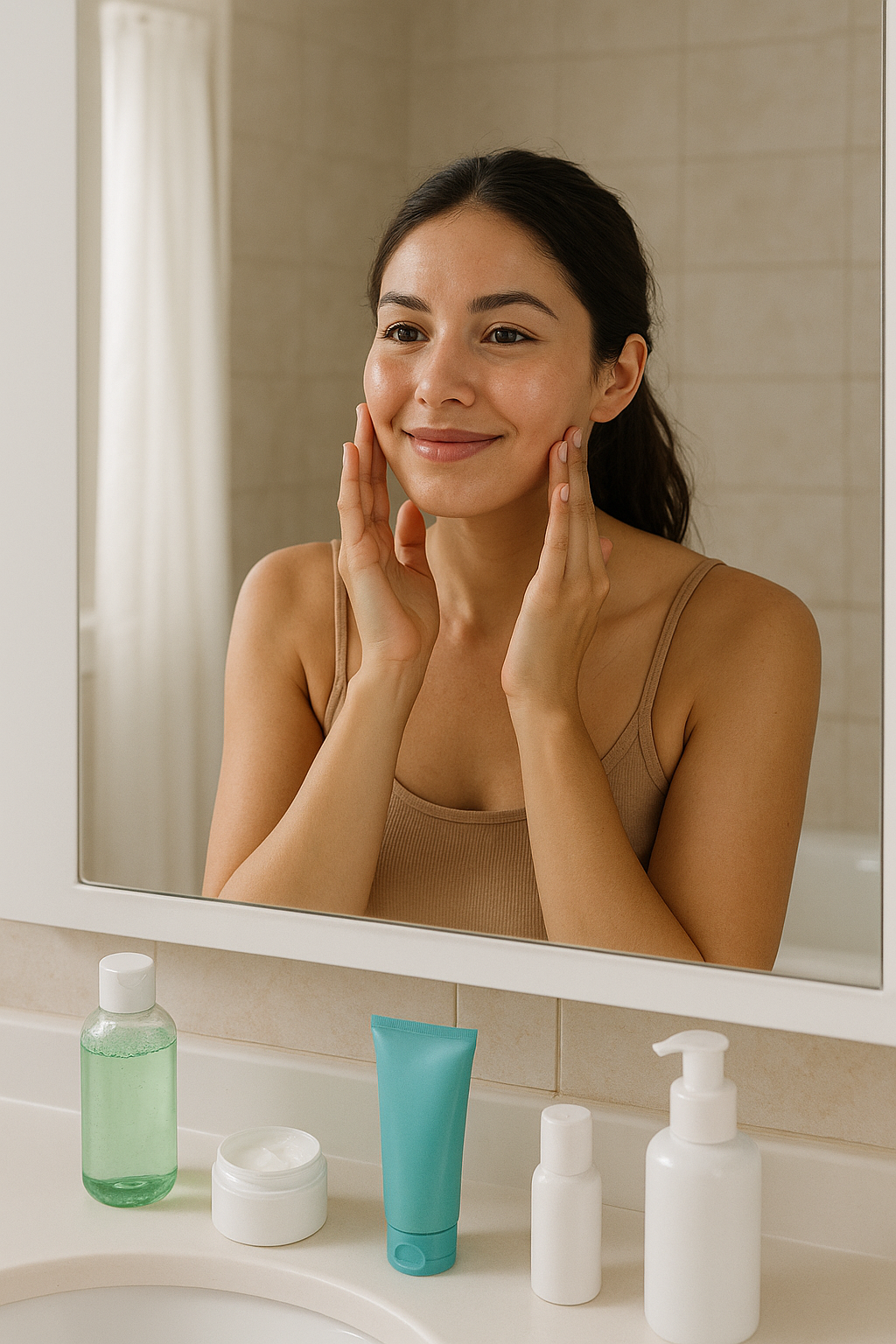Tips for Acne-Free Skin in Oily Skin Types
If you have oily skin, you’re not alone — and you’re definitely not helpless. Oily skin often comes with a shiny T-zone, enlarged pores, and a frustrating cycle of breakouts. But the truth is, oily skin isn’t your enemy. With the right care and habits, it can be healthy, balanced, and even a blessing in disguise — oily skin tends to show signs of aging more slowly!
The key is learning how to work with your skin, not against it. That means choosing the right products, building a consistent routine, and avoiding common pitfalls that trigger breakouts.
In this article, you’ll learn:
- Why oily skin develops and how it behaves
- Common skincare mistakes that make acne worse
- The best ingredients for oil control and acne prevention
- A simple daily routine to keep your skin balanced
- Lifestyle tips to support acne-free, glowing skin
Let’s get the facts straight — and your skin clear.
Understanding Oily Skin
Oily skin produces more sebum (oil) than other skin types. Sebum is essential — it lubricates the skin and protects it from environmental stress. However, excess sebum can:
- Mix with dead skin cells and clog pores
- Feed acne-causing bacteria
- Lead to whiteheads, blackheads, and inflamed pimples
Factors that increase oil production:
- Genetics
- Hormonal fluctuations (especially during puberty or menstruation)
- Humid climate
- Over-washing or using harsh products (yes, really!)
Common Mistakes People With Oily Skin Make
❌ Over-Cleansing
Washing your face too often or with harsh cleansers strips the skin, which triggers even more oil production as your skin tries to compensate.
✅ Wash no more than twice a day with a gentle, non-stripping cleanser.
❌ Skipping Moisturizer
It sounds logical: oily skin doesn’t need more moisture, right? Wrong. Dehydrated skin will produce more oil to compensate.
✅ Use a light, oil-free, hydrating moisturizer daily.
❌ Using the Wrong Products
Thick creams, comedogenic oils, and pore-clogging makeup can worsen breakouts.
✅ Choose non-comedogenic, fragrance-free, and oil-free products.
❌ Touching or Picking the Skin
Touching your face transfers bacteria and oils. Picking pimples leads to:
- More inflammation
- Scarring
- Slower healing
✅ Keep your hands off your face, and treat pimples with a proper spot treatment.
The Best Ingredients for Oily, Acne-Prone Skin
Here’s what you should look for in your skincare products:
| Ingredient | What It Does |
|---|---|
| Salicylic acid (BHA) | Penetrates pores, removes excess oil and dead skin |
| Niacinamide | Balances oil production, reduces redness |
| Zinc | Controls sebum, calms inflammation |
| Clay (kaolin, bentonite) | Absorbs oil, detoxifies pores |
| Tea tree oil | Antibacterial and anti-inflammatory |
| Retinoids | Unclog pores, improve skin texture |
| Hyaluronic acid | Hydrates without adding oil |
Your Daily Skincare Routine for Acne-Free Oily Skin
🌞 Morning Routine
- Gel Cleanser
Use a cleanser with salicylic acid or tea tree oil for a deep clean. - Niacinamide Serum
Helps regulate oil and reduce the appearance of pores. - Lightweight Moisturizer
Choose a gel-based product with hyaluronic acid or aloe vera. - Sunscreen (SPF 30+)
Opt for a mattifying sunscreen to prevent that midday shine.
💡 Some sunscreens also act as primers — great for makeup wearers!
🌙 Evening Routine
- Double Cleanse (if wearing sunscreen/makeup)
First use micellar water or an oil cleanser, then a gel cleanser. - Exfoliate (2–3x/week)
Use a salicylic acid toner or mask — but not daily. - Retinoid or Niacinamide Serum
Apply a retinoid 2–3x per week to prevent clogged pores. - Hydrating Gel Moisturizer
Avoid anything too occlusive.
💡 Use spot treatments on active breakouts — benzoyl peroxide or sulfur-based creams are effective.
Weekly Treatments
🧖♀️ Clay Mask (1–2x per Week)
- Kaolin or bentonite clay helps reduce oil and draw out impurities.
- Leave on for 10–15 minutes, then rinse and moisturize.
💧 Sheet Mask (Optional)
Use a calming, non-comedogenic sheet mask once a week to soothe inflammation — look for ingredients like green tea or centella asiatica.
Lifestyle Tips for Clear Skin
Oily skin isn’t just about the products you use — daily habits matter too.
🧴 1. Clean Your Pillowcases and Phone Regularly
Bacteria and oil from your pillow and phone can transfer to your skin. Wash pillowcases 1–2 times a week and wipe your phone screen daily.
🍽️ 2. Eat Skin-Supportive Foods
Some studies show a link between high-glycemic foods (like white bread and sugary snacks) and breakouts.
Try:
- Leafy greens
- Omega-3s (walnuts, chia, salmon)
- Zinc-rich foods (pumpkin seeds, lentils)
- Low-sugar fruits (berries)
💦 3. Stay Hydrated
Dehydrated skin = more oil production. Drink plenty of water daily, especially if you live in a hot or humid climate.
🧘♀️ 4. Manage Stress
Stress triggers hormonal changes that can lead to more oil and acne.
Try:
- Meditation or deep breathing
- Light exercise
- Getting enough sleep (7–9 hours)
🧼 5. Don’t Overdo the Products
Stick to what works — no need to constantly rotate in new treatments. Give products at least 4–6 weeks to show real results.
When to See a Dermatologist
If your acne:
- Is painful or cystic
- Causes scarring
- Doesn’t improve with consistent care
Then it’s time to seek professional guidance. Prescription treatments like topical retinoids, antibiotics, or oral medications may be helpful.
Final Thoughts: Shine Bright — On Your Terms
Oily skin isn’t a flaw — it’s a skin type with its own needs and strengths. With the right approach, you can manage oil production, prevent breakouts, and enjoy clear, balanced skin without stripping it dry or stressing it out.
Keep it simple. Be patient. And remember: clear skin is about balance, not perfection.
